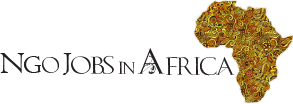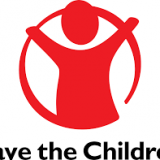Save the Children is the leading independent organization for children in need, with programs in over 120 countries. We save children’s lives. We fight for their rights. We help them fulfil their potential. Save the Children is working in Nigeria because one in five children in Nigeria dies before their fifth birthday. About 40% of children miss out on school and have to work to survive while nearly 2 million children have lost one or both parents to an AIDS-related disease.
We are recruiting to fill the position below:
Job Title: Feasibility, Risk and Market Assessment Consultant
Job ID: 2000057O
Location: Maiduguri
Employee Status: Fixed Term
Child Safeguarding
- Level 3: The post holder will have contact with children and/or young people either frequently (e.g. once a week or more) or intensively (e.g. four days in one month or more or overnight).
Background and Scope of Work:
- The ten-year conflict in Northeast Nigeria has resulted in one of the world’s worst protracted and chronic crises, leaving 7.1 million people (2.3m girls, 1.9m boys, 1.6m women, 1.3m men) in need of urgent humanitarian assistance, particularly in the state of Borno which hosts 63% of the affected population.
- While significant gains were made by the armed forces of Nigeria between 2016 and 2018 to liberate areas controlled by Non-State Armed Groups (NSAG), violence has resurfaced in 2019, causing massive displacement.
- The majority of the newly displaced are in dire conditions and in need of urgent life-saving humanitarian assistance and protection interventions. According to the Nigeria HNO, 1.8 million people (440,000 women, 364,000 men, 614,000 girls and 516,000 boys) are internally displaced, with 80% of these being hosted in Borno State. One in four IDPs are under five, and 80% are women and children.
- SC is therefore looking for a consultant to conduct a Feasibility, Risk and Market assessment to inform program activities. The assessment is planned to focus on peri-urban and urban opportunities within the following LGAs: Konduga and Jere, Borno state
The Overall Objectives of the Assessment will be to:
- Identify feasibility of using cash and voucher assistance (CVA) as a modality for delivering livelihood assistance to adolescent girls
- Identify key risks associated with CVAs and recommend appropriate mitigation measures
- Determine the appropriateness of CVA to needs and preferences of adolescent girls, including suitable delivery mechanisms, transfer modalities, targeting criteria and transfer value.
- In consultation with adolescent girls, identify profitable and sustainable income-generating opportunities suitable for adolescent girls along with estimated maturity duration and possibility of saturation
- Identify relevant skills set required for establishing and managing income-generating activities or micro-enterprises
- Identify possible skills training providers, including both traditional TVET and potential apprenticeship models which would support adolescent girls to gain the needed skills to access the afore-mentioned income-generating activities.
The specific tasks will be to:
- Access the feasibility (in terms of markets, organizational capacity, financial service providers, safety and security, infrastructure etc.), and barriers to using CVA for implementing livelihood interventions to support socio-economic integration of vulnerable adolescent girls
- Analyze the acceptance of CVA by stakeholders including Government, communities, sector working groups / clusters as well as key financial policies and regulations that impact on CVA
- Develop a risk matrix which clearly describes risks associated to implementing livelihood interventions using CVA as modality and appropriate mitigation measures. The risk matrix and mitigation measures should address, but are not limited to, the following:
- Financial:
- Financial loss (e.g. through fraud or diversion by staff, partners or beneficiaries)
- Failure to be Donor Compliant, ensuring appropriate documentation and chain of custody
- Failure to consult SCI Finance on managing financial risk (e.g. fluctuation between donor vs programming currency and cash flow)
- Markets:
- High inflation leaving beneficiaries unable to obtain adequate goods / commodities
- Inability to deliver of traders, financial institutions, or other service providers
- Lack of acceptance, participation, or awareness of CTP modalities by beneficiaries, communities, authorities.
- Disruption of market due to emergencies
- Beneficiary:
- Lack of awareness or willingness to participate in CTP
- Lack of capability or knowledge to use CTP modality (e.g. – Smart Cards, mobile phones, etc.)
- Lack of capacity to administer the funds
- Child safeguarding incidents
- Security:
- Bodily harm or death of SCI staff / beneficiaries (pre-, during, & post-distribution)
- Lack of infrastructure or transportation due to emergency situation (Earth Quake, Floods)
- Government restrictions
- CTP Modality:
- Fraud, Counterfeiting, Corruption in CTP modality chosen (vouchers, mobile phones, cash, etc.)
- Failure to reach programme objectives by choice of CTP modality (familiarity, reach, scalability, etc.)
- Cost associated with modality and value for money
- Legal:
- Transfer money though legal channels. For e. g in some countries it might be illegal to engage with Hawala or money transfer agents
- Suspension of programming or investigation by charity regulator or law enforcement authorities due to breach of a law SCI and CO is subject to (i.e. UK laws and laws of country of CTP operation), e.g. failure to report when
- Analyse and determine the best strategy and methods for e-voucher delivery
- Gather and synthesise existing studies and literature from Borno that would cover the same topics as this study, including but not limited to work carried out for the YESSO programme to identify specific vocations on which to train adolescent girls.
- Provide an overview of current labour market trends: assess the different sectors currently operating in peri-urban and urban areas that could be expanded, those that could be created in the near future, and those that have reached saturation.
- For each sector or value chain which has not reached saturation, identify a) its maturity duration and profitability; b) the desire of adolescent girls to engage with the sector or value chain in question;
- For each of the above sectors identify i) requirements to entry/start up, and; ii) barriers to entry/ start-up with a focus on adolescent girls and suggest ways to overcome them.
- Map the most relevant income-generating or employment opportunities for target adolescent girls with their basic requirements; and in consultation with SCI, select the most viable opportunities (3-6).
- Identify the key skills needed for each agreed opportunity and any key certification which is needed to work in the sector, including how this certification is currently obtained.
- From the above information, map the different skills training options including their benefits and drawbacks against barriers to adolescent girls to up-taking the different skills training options and identify the most viable approaches to skills training for chosen sectors
- Identify key market actors of the relevant income-generating or employment opportunities with whom business relationships can be established and recommend strategies for sustaining such relationships
- Identify cost of start-up kit for each of the identified opportunities for adolescent girls, including the relevant items, unit, unit cost, quantity and total cost
- Explore whether a formal and informal system of apprenticeship is in place, and if it exists, how does this system function, how does it relate to TVET providers, what are entry requirements / barriers (esp. for adolescent girls) and what is the current capacity of this system;
Methodology
A detailed methodology should be provided by the consultant showing how the assessment aims and objectives will be met. The consultant should:
- Define the assessment methodology and develop data collection tools
- Review relevant material held by SC and externally
- Collect data on existing income-generating and employment opportunities in selected peri-urban and urban areas, taking into account: growth potential, maturity duration and profitability
- Engage with focus groups of adolescent girls to identify opportunities which are of interest to them and the reasons for their choices
- Identify requirements and constraints / challenges to entry into selected sectors (focusing on adolescent girls) and provide recommendations on how to overcome them
- Assess the capacity of existing government and private sector vocational training providers, including current services, capacity and entry requirements and links to existing apprenticeship models;
- Collect data from a representative sample of businesses in target sectors to ascertain the current status and potential of an apprenticeship model in target areas;
- Engage with focus groups of youth (women and men) to identify barriers / constraints to accessing the different skills development options and ways to overcome these.
- Conduct relevant key informant interviews with relevant stakeholders from government ministries and other bodies as agreed in the methodology refinement.
Deliverables
Deliverables should include the following:
- An inception report, including: planned timeline and work plan, literature review of all relevant secondary sources, detailed methodology / approach, planned stakeholders to be consulted and sampling framework, data collection and analysis tools, qualitative and quantitative protocols for data collection and analysis
- Definition framework to ensure we have a common understanding of key terms and sectors
- Any suggested improvements to existing study scope, as outlined in this document
- A mapping of opportunities identified against agreed criteria and presentation of preliminary findings for consultation with SCI to select the type of businesses to be further researched;
- Detail on skills requirements and certification for entry / start up of selected sectors;
- A mapping of options for provision of skills training, covering both traditional vocational training and apprenticeship models against agreed criteria;
- Identification of key constraints or concerns facing businesses with regards to vocational training and apprenticeship models with proposed solutions to key constraints;
- Analysis of constraints / barriers facing youth with a focus on young women to entry in the selected sectors and access to identified skills-building opportunities, with potential solutions proposed;
- Completed risk matrix
- Draft report written in English for presentation/discussion with SCI.
- One (1) electronic file of the clean (final) qualitative and quantitative data collected
- Final report
Consultant Qualifications
Minimum Qualifications:
- At least a Master’s degree, in a relevant discipline
- Over 5 years research experience related to markets, entrepreneurship and livelihoods in both development and humanitarian context.
- Experience with socio-economic surveys.
- Good understanding of Northern Nigeria
- Ability to produce well written, analytical reports in English
- Strong quantitative and qualitative data analysis skills
More Information
- Job City Abuja



